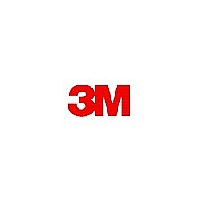RAISLETAPE54 3M, RAISLETAPE54 Datasheet - Page 4

RAISLETAPE54
Manufacturer Part Number
RAISLETAPE54
Description
TAPE ROHS AISLE MARKING 54' ROLL
Manufacturer
3M
Datasheet
1.RAISLETAPE54.pdf
(100 pages)
Specifications of RAISLETAPE54
Tape Type
Marking - Printed "Lead-Free Area"
Backing, Carrier
PVC (Poly Vinyl Chloride)
Thickness
0.0060" (6.0 mils, 0.152mm)
Width
3.00" (76.20mm) 1/4'
Length
54' (16.5m) 18 yds
Color
White, Green Print
Usage
Aisle Marking
Lead Free Status / RoHS Status
Not applicable / Not applicable
Temperature Range
-
Adhesive
-
Thickness - Adhesive
-
Thickness - Backing, Carrier, Liner
-
Other names
51111764688
80000954547
80000954547
4
Knowing when to use 3M
to improve your product and process
Based on your answers to the following questions, you can decide if it will be worth
your time to evaluate specific 3M adhesives and tapes for your operation.
Q
Some materials are harder to bond than others. But with 3M adhesive
and tape technologies, even many materials once defined as
“hard-to-bond,” such as low surface energy plastics, can be bonded
with strength greater than the materials bonded. The list of potential
substrates ranges from glass, wood, cardboard, and rubber to steel,
concrete, foam, polycarbonate, and just about any other material you
can name.
Strength can be readily matched to the substrate and stress
characteristics to which the bond will be subjected. Most adhesives
and tapes perform better when the primary stress is tensile or shear.
In most industrial applications, however, a combination of stresses
are involved that may include cleavage and peel.
Tensile
Cleavage
Can adhesives hold together the materials you want to
join with the strength you need?
Peel
Shear
™
Adhesives and Tapes
1
Tensile is pull exerted equally over the entire joint. Pull direction is
straight and away from the adhesive bond.
Shear is pull directed across the adhesive, forcing the substrates to
slide over each other.
Cleavage is pull concentrated at one edge of the joint, exerting a
prying force on the bond. The other edge of the joint is theoretically
under zero stress.
Peel is concentrated along a thin line at the edge of the bond
where one substrate is flexible. The line is the exact point where an
adhesive would separate if the flexible surface were peeled away
from its mating surface. Once peeling has begun, the stress line
stays out in front of the advancing bond separation.
Q
Adhesives distribute stress evenly over the entire bonded area. A
rivet or screw hole in the substrate concentrates stress at the hole
and can decrease physical properties of the substrate. With uniform
stress distribution of adhesives and tapes, lighter, thinner materials
can be used without concerns about distortion, splitting, or crazing
at the mechanically fastened site. Elimination of holes in metal
also reduces the chances for rust and corrosion.
2
Do you want to eliminate the stress concentration caused
by spot welds, rivets, screws, or other mechanical fasteners
and maintain surface integrity?
3










